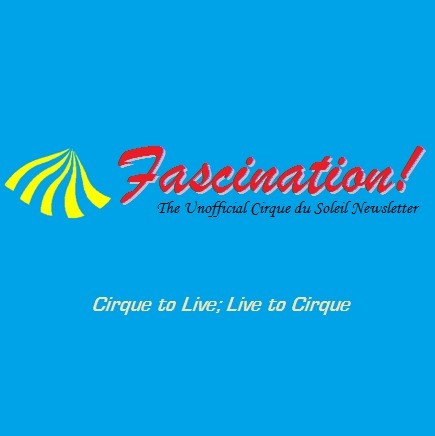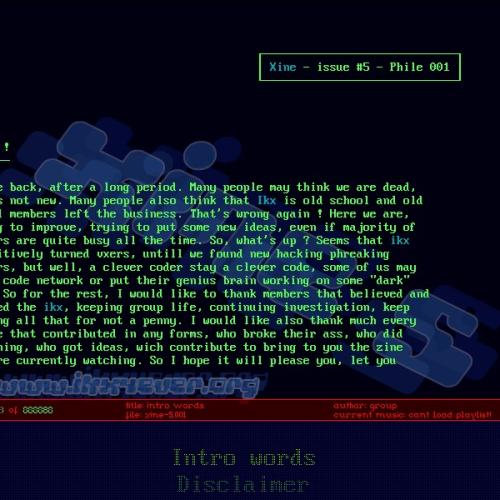Copy Link
Add to Bookmark
Report
AIList Digest Volume 5 Issue 206

AIList Digest Friday, 28 Aug 1987 Volume 5 : Issue 206
Today's Topics:
Linguistics - Terminal Iconography & Paralanguage,
Seminar - An Autonomous Agent (NASA Ames)
Conference - 5th Int. Workshop on Database Machines
----------------------------------------------------------------------
Date: Mon, 24 Aug 87 12:24:02 -0400
From: Andy Latto <alatto@ALEXANDER.BBN.COM>
Subject: terminal iconography
Resent-From: Bruce Nevin <bnevin@cch.bbn.com>
Date: Thu, 20 Aug 87 16:07:17 -0400
From: Stephen Gildea <mit-erl!gildea@EDDIE.MIT.EDU>
The first use of *askerisks* for emphasis that I know of is the game
Adventure, which only assumed one case. This was 1967. Question:
did the authors invent it, or were they using an already-common
notation.
< Stephen
------------------------------
Date: Mon, 24 Aug 87 16:26:24 -0400
From: John Robinson <jr@LF-SERVER-2.BBN.COM>
Reply-to: jr@ALEXANDER.BBN.COM
Subject: Re: terminal iconography
>> From: Stephen Gildea <mit-erl!gildea@EDDIE.MIT.EDU>
>> This was 1967.
Well, maybe 1976.
/jr
------------------------------
Date: 22 AUG 87 10:57-EST
From: ASTEROFF%CUTCV1.BITNET@wiscvm.wisc.edu
Subject: Paralanguage/Terminal Talk
In answer to the recent posting about "Terminal Talk," I recently
completed my doctoral dissertation on Paralanguage in Electronic Mail,
a.k.a. "Terminal Talk" in electronic communication. Below is a formal
definition for paralanguage in computer-mediated communication
and some categories that I developed for my analyses.
/Janet Asteroff
Teachers College
Columbia University
Definition:
Paralanguage is a component of spoken, written, and electronic
communication. It gives to what is being communicated a character
over and above that which is necessary to convey meaning in the
linguistic or grammatical sense. Paralanguage in electronic mail is
positioned between spoken and written paralanguage in its visual and
interpretive structures. Electronic paralanguage, a term developed to
describe paralanguage in computer-mediated communication, is defined
as: features of written language which are used outside of formal
grammar and syntax, and other features related to but not part of
written language, which through varieties of visual and interpretive
contrast provide additional, enhanced, redundant or new meanings to
the message.
Categories of Paralanguage
1. Vocal Spellings. Vocal spellings or contractions can be used
as a time-saving typing device for those who send many messages. In
certain cases, this use may not have any relation to sound qualities.
When used solely to save time or typing, vocal spellings are
"speedwriting" techniques.
r u clogging up the print queue?
2. Vocal Segregates. Sound substitutes to indicate tone of voice
appear often in the public and private electronic mail of some
computer users, usually but not exclusively those who have spent a
great amount of time using computer-mediated communication systems.
Many of these expressions originated in and are borrowed from
cartoons or comics. Vocal segregates such as "wham," "arghh" and *gak*
for instance, can be as common to some (but hardly to all) users of
electronic mail as they are to cartoonists. In that form of print
communication, vocal segregates function to convey a great deal of
information in a small space, such as in a single drawing or in one
frame of a longer strip.
3. Manipulation of Grammatical Markers. The use of ??? .... ( ) etc.
4. Manipulation of Special Symbols. This includes any symbol on the
computer keyboard used to mark off various parts of a message by
surrounding certain words or phrases. Like the manipulation of
grammatical markers these symbols, in order to be paralinguistic
features, are used outside of their traditional or formal meaning, e.g.,
Apartment #2K uses the number sign for its traditional meaning, but in
the expression @@!#%^* it becomes a paralinguistic feature. Like
grammatical markers, special symbols indicate degrees of stress, show
pause, signal a shift in tone or changes of subject.
Most often they are found on the top (number) row of the computer
keyboard by shifting to uppercase, although any symbol on the keyboard
can be used. This includes the asterisk (*), number sign (#), up-arrow
(^), plus sign (+) and ampersand (&), as well as right and left angle
brackets (< >) and the or bar (|). Like grammatical markers, special
symbols serve many different functions. An asterisk placed at the
beginning and end of a word, like uppercasing, shows stress, and a
string of asterisks in the middle of a message signals a change in
subject. When grouped together special symbols can be the entire
communication, as indicated in the first example below, where the
function is to indicate extreme stress and in some cases to substitute
for obscenities.
5. Spatial Arrays. A spatial array is defined in this research as
the systematic spatial arrangement of characters to create a graphic
or an identifiable image...
This definition of spatial arrays is supported by examples of the more
recent use on the computer of symbols, letters and numbers to create
"faces" or face symbols, popularly and generically referred to as a
"smiley face." Various combinations of symbols, letters, and numbers
create several different kinds of faces which when viewed sideways
create an image. Face symbols, particularly the "smiley-face" and the
"frowney-face" originated in print and mass media in the early 1970's,
and were not created by computer users. The many variations on the
basic "smiley-face" however, would appear to be unique to
computer-mediated communication.
6. Text Forms. Text Forms describe the types of paralinguistic
features made possible through certain kinds of basic
and technically sophisticated text manipulation, the latter
accomplished using a text editor. These features can provide a
contrast and indicate stress, pause, or different kinds of tones
within a message. Text Forms provides a way of looking at certain
types of presentations of text on the screen, including the entire
message or individual parts. In most cases a Text Form is not as
dramatic or as systematically patterned as a spatial array.
Text Forms include different types of text arrangements such as
spacing between letters and words, the justification of paragraphs or
blocks of text, numbered or unnumbered lists, outlines, and "the
absence of certain features or expected work in composition" such as
the lack of paragraphing (Carey, p. 68).
7. Text Movement. Text, or any symbol, can be made to appear to
move across the screen, horizontally from left to right, by
overwriting one letter on top of another. This places the same
characters in different parts of the screen. By its very nature,
text movement indicates that these words should be read differently
from stationary text. Text movement indicates emphasis, and in some
cases demonstrates extreme stress. Several kinds of text movement
and combinations also make possible different features. Text
movement can be smooth and constant if the spacing between each
appearance is even, or choppy and inconsistent with uneven spacing.
Regular or constant text movement creates a regular rhythm, while
uneven text movement creates long or short pauses.
------------------------------
Date: Tue, 25 Aug 87 13:39:14 pdt
From: plu..jared@ames-pioneer.arpa
Subject: Seminar - An Autonomous Agent (NASA Ames)
NASA, Ames Research Center, Seminar Announcement
An Autonomous Agent
Steven Vere
Lockheed AI Center
Abstract:
The goal of the autonomous agent project is the creation within the next 5
years of an integrated AI artifact with the following capabilities:
1) Limited natural language understanding and generation in a core vocabulary
of 1900 words. The vocabulary is approximately the union of Ogden's Basic
English and 1000 most frequent English words. Syntax coverage will be limited.
2) Common sense knowledge about the concepts and actions underlying the core
vocabulary.
3) Reasoning, plan synthesis, and plan execution capability.
4) A personal event episodic memory system.
Work is in progress to write the semantics and common sense knowledge for the
core vocabulary. This is based on a set of about 50 relational semantic
primitives, such as LOCATION, EXISTS, CAN, etc. For compatibility with
planning, verbs are described in a state change semantics ultimately
expandible into primitive relations. However, the primary concern is with the
content rather than the form of this knowledge. A graphics simulation package
is being developed to exercise the agent in a simulated Seaworld involving an
autonomous unmanned submarine. In this way, distracting and (for us)
uninteresting perception and low level control problems are bypassed, allowing
the project to focus on cognitive level problems.
Biography:
Dr. Vere is the developer of the DEVISER planning and scheduling system.
Those of us who have done some work in AI planning should be familiar
with his system since it was the first AI plannerto consider "time" in
the course of planning. Vere developed DEVISER while at JPL. He has
recently joined Lockheed AI center and would be talking to us about his
plans for the construction of "An Autonomous Agent".
Date: Thursday, August 27, 1987
Time: 3:00 to 4:30 PM
Location: Bldg. 244, Room 103
Inquires: Hamid Berenji, (415) 694-6525, berenji@ames-pluto.arpa
*****************************************************************************
------------------------------
Date: Tue, 25 Aug 1987 17:19 CST
From: Leff (Southern Methodist University)
<E1AR0002%SMUVM1.BITNET@wiscvm.wisc.edu>
Subject: Conference - 5th Int. Workshop on Database Machines (bm707)
AI at Upcoming Conferences
Fifth International Workshop on Database Machines
October 6-8, 1987, Karuizawa, Japan
ICM3: Design and Evaluation of an Inference Crunching Machine
J. C. Syre, J. Noye et. al (ECRC, FRG)
Knowledge Base Machine Based on Parallel Kernel Language
H. Itoh, T. Takewaki, (ICOT, Japan)
KEV-A - A Kermenl for Bubba
W. K. Wilkinsont (Bell Communications Research),
H. Boral (MCC)
A Stream-Oriented Approach to Parallel Processing for Deductive Databases
Y. Kiyoki, K. Kato, N. Yamaguchi, T. Masuda
University of Tsukuba, Japan
DDC: A Deductive Database Machine
R. Gonzalez-Rubio, J. Rohmer, A. Bradier, B. Bergsten
(Bull sa Centre dde Recherche, France)
An Inference Model and a Tree-Structured Multicomputer System for Large
Data-Intensive Logic Bases
G. Z. Qadah (Northwestern University)
Knowledge-Based System for Conceptual Schema Design on a Multi-Model
Databse Machine
E. Ozkarahan (Arizona State Univer., USA), A. Bayle (Honeywell Bull)
An Algebraic Deductive Database Managing a Mass of Rule Clauses
T. Ohmori, H. Tanaka, University of Tokyo Japan
A Shared Memory ARchitecture for MAJI Production System Machine
J. Miyazaki, H. Amano, K. Takeda, H. Aiso (Keio Univ., Japan)
A Real Time Production System Architecture Using 3-D VLSI Technology
S. Fujita, R. Aibara, T. Ae (Hiroshima Univ., Japan)
Architectural Evaluation of a Semantic Network Machine
T. Furuya, T. Niguchi, H. Kusumoto, K. Handa, A. Kokubu (ETL, Japan)
A Superimposed Code Scheme for Deductive Databases
M. Wada, H. Yamazaki, S. Yamashita, N. Miyazaki, Y. Morita, H. Iotoh
(Oki and ICOT of Japan)
An Architecture for Very Large Rule Bases Based on Surrogate Files
D. Shin, P. B. Berra (Syracuse Univ., USA)
A Simulation STudy of a Knowledge Base Machine Architecture
H. Sakai, S. Shibayama
Implementing Parallel Prolog System on Multiprocessor System PARK
H. Matsuda (Kobe Univ., Japan), K. Kohata (Okayama Univ. of Science, Japan),
T. Masuo, Y. Kaneda, S. Maekawa (Kobe University)
Search Strategy for Prolog Data Bases
G. B. Sabbatel, W. Dang (INPG, France)
The Unification Processor by Pipeline Method
M. Tanabe, H. Aiso (Keio Univ., Japan)
------------------------------
End of AIList Digest
********************























